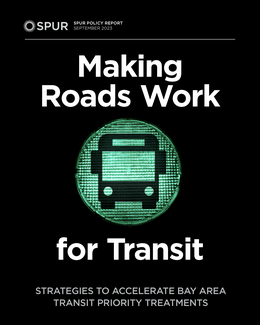Currently, transit delays and unreliability can make riding the bus a nonstarter for those who have other options for getting around. Growing segregation of the transit system is inequitable, unsustainable, and inefficient. Not only does it leave transit-dependent populations with a second-rate travel experience, but it also ignores the significant role that buses and other roadway transit vehicles can and must play in the transportation system. That system is expected to provide equitable access to opportunity for all and to play an outsize role in curbing California’s greenhouse emissions.
Neither of those goals can be achieved without significant growth in transit ridership. Some of the Bay Area’s biggest transit operators stand on the brink of a fiscal cliff. Rather than cut services, they need to improve and expand them to bridge to a more sustainable business model.
Tools exist to get buses and other roadway transit out of traffic, dramatically improving service quality. Now is the time to make investments that will put these tools into use.
Making Roads Work for Transit argues that giving transit vehicles priority on Bay Area roads can deliver the speed and reliability improvements that are needed to get more people on buses and out of cars. It offers 16 recommendations for aligning the interests of transit agencies and local jurisdictions to greenlight these improvements.
